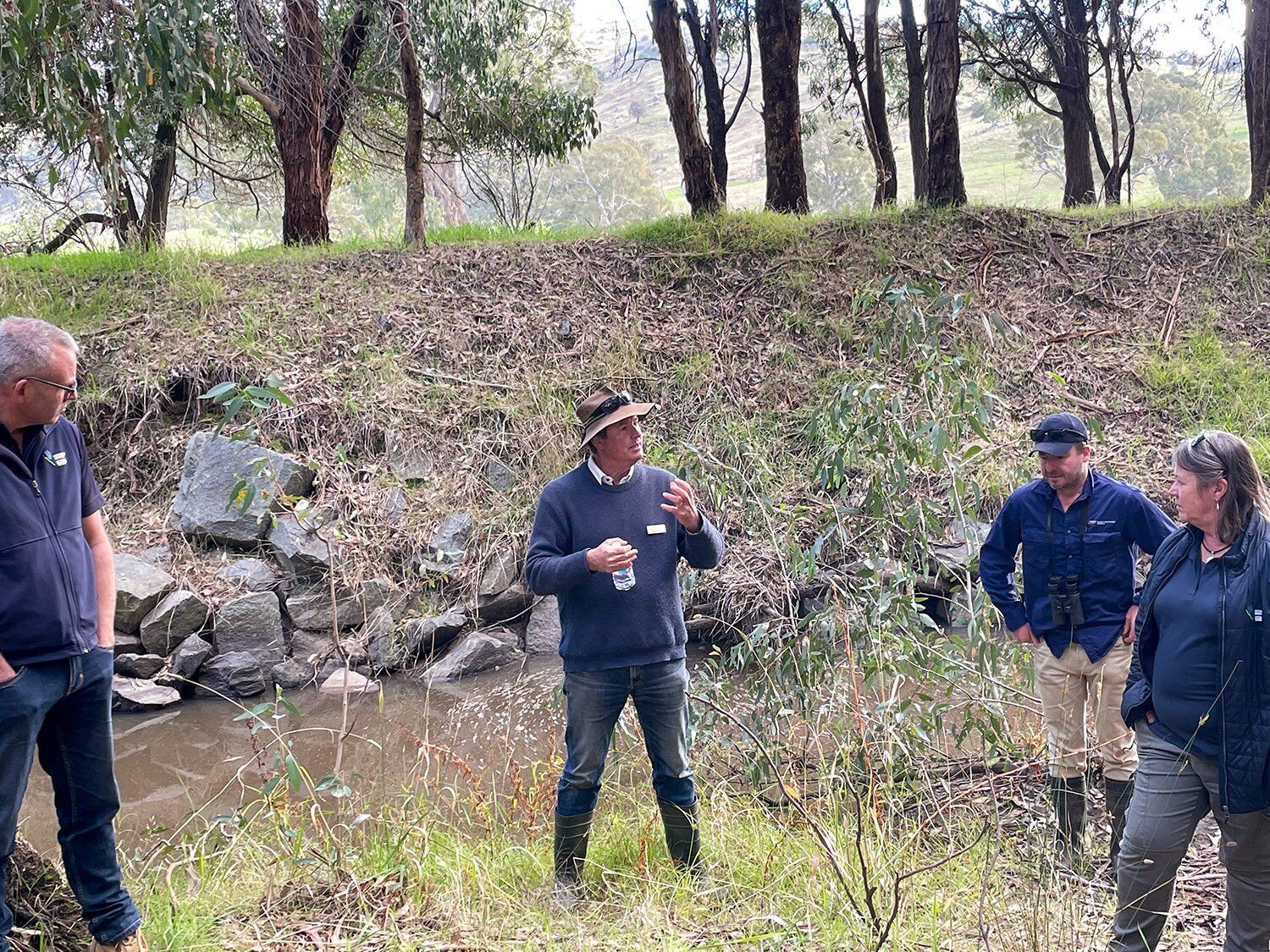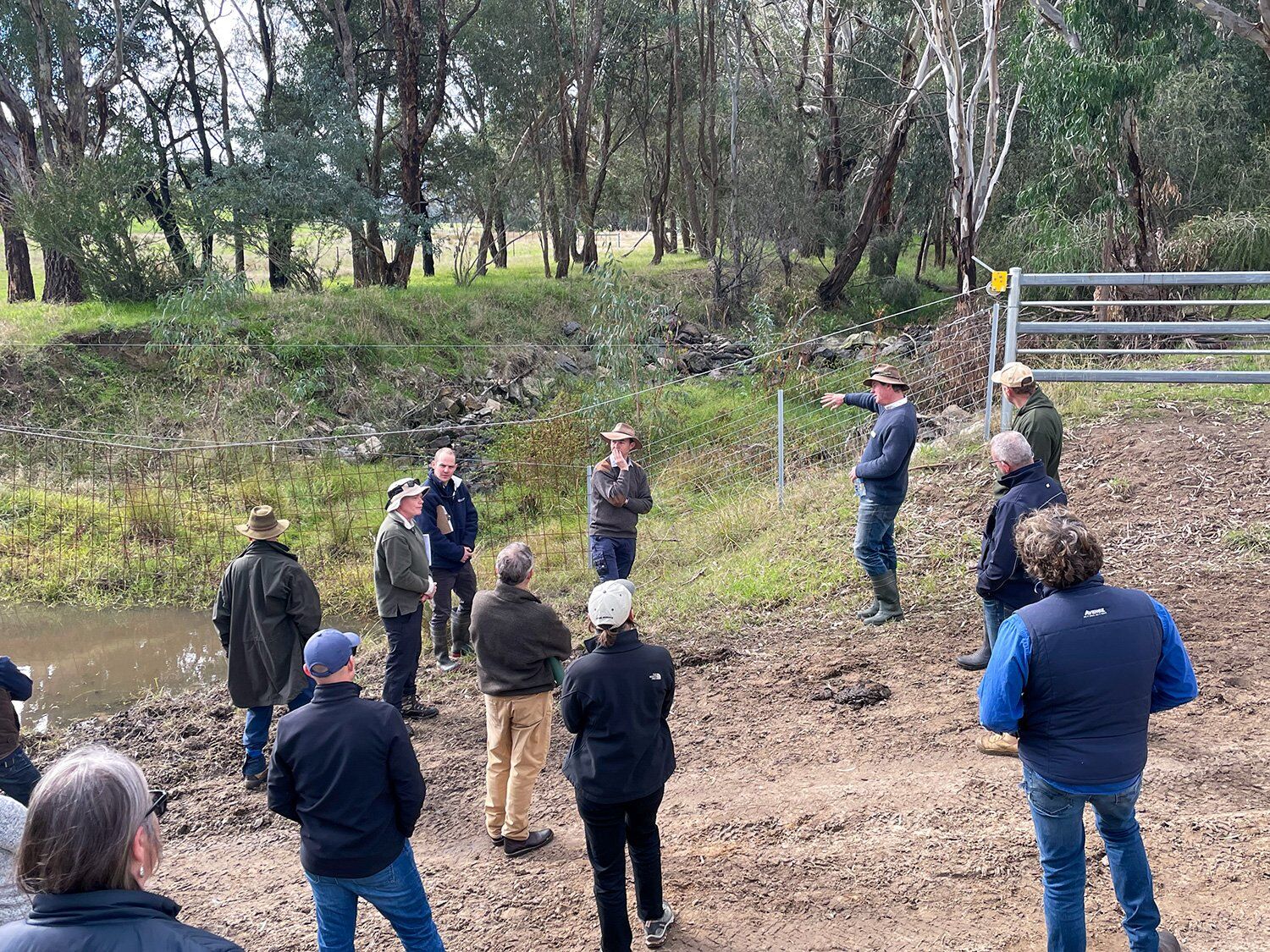Peter Hazell discussing a rock chute example with the Turnip Creek group.
The Turnip Creek catchment is located between the towns of Euroa and Benalla in Victoria, east of the Hume Highway. The region is home to one of the first Landcare groups in the country, which continues to pioneer agricultural land management.
The landholders of Turnip Creek have been working towards a catchment scale project for close to four years and their commitment, passion and desire to enable change within the group is unmistakable. Along the journey, the group have visited Mulloon Institute and Martin Royd’s property, Jillamatong property at Braidwood.
Earlier this year, Turnip Creek landholders, Bush Heritage Australia and Alluvium formed a consortium with Mulloon Institute to seek funding for a catchment-scale project. Until funding is found, all parties have agreed to contribute to the project on an in-kind basis.
In early May 2022, the group gathered in the region to discuss a catchment-scale project, specifically looking at examples of rock chutes in the catchment and the regulatory requirements. The group was lucky to have Emeritus Professor Ian Rutherford (Alluvium), along with Principal Landscape Planner Peter Hazell from Mulloon, to share their knowledge.
Discussing the impacts of landscape rehydration interventions on the whole of catchment.
Joel Fitzgerald of Bush Heritage Australia facilitated the day and engaged with the local Goulburn Broken Catchment Management Authority, who shared their knowledge and understanding of the region and associated regulations. Rock chutes – which are rock armouring used within a stream, and which were popular with the Soil Conservation Service and Catchment Management Authorities – were a focus of the day. The group inspected three of these structures which were installed into one creek 30 years ago for erosion mitigation. Some of the questions which came up on the day were: how to move beyond erosion control to landscape rehydration; and, what can we learn from rock chutes? The answer to this may be found in restoring the natural systems and cycles, as opposed to a set indicator.
It was clear that the problems being addressed throughout the generations have not changed a great deal. We were also struck by the willingness of everyone to learn and forge a new way forward. The project could represent the first catchment scale landscape rehydration project in Victoria. To quote Thomas Jefferson, “if you want something you have never had, you have to do something you have never done”.
Mulloon Institute practices principle-based management, which means we are seeking to apply the lessons from the Mulloon Rehydration Initiative and other projects around the country to each community. We look forward to learning how these principles apply to the Turnip Creek catchment.
The Mulloon Rehydration Initiative is jointly funded through Mulloon Institute and the Australian Government’s National Landcare Program, with support from the NSW Government’s Environmental Trust.

